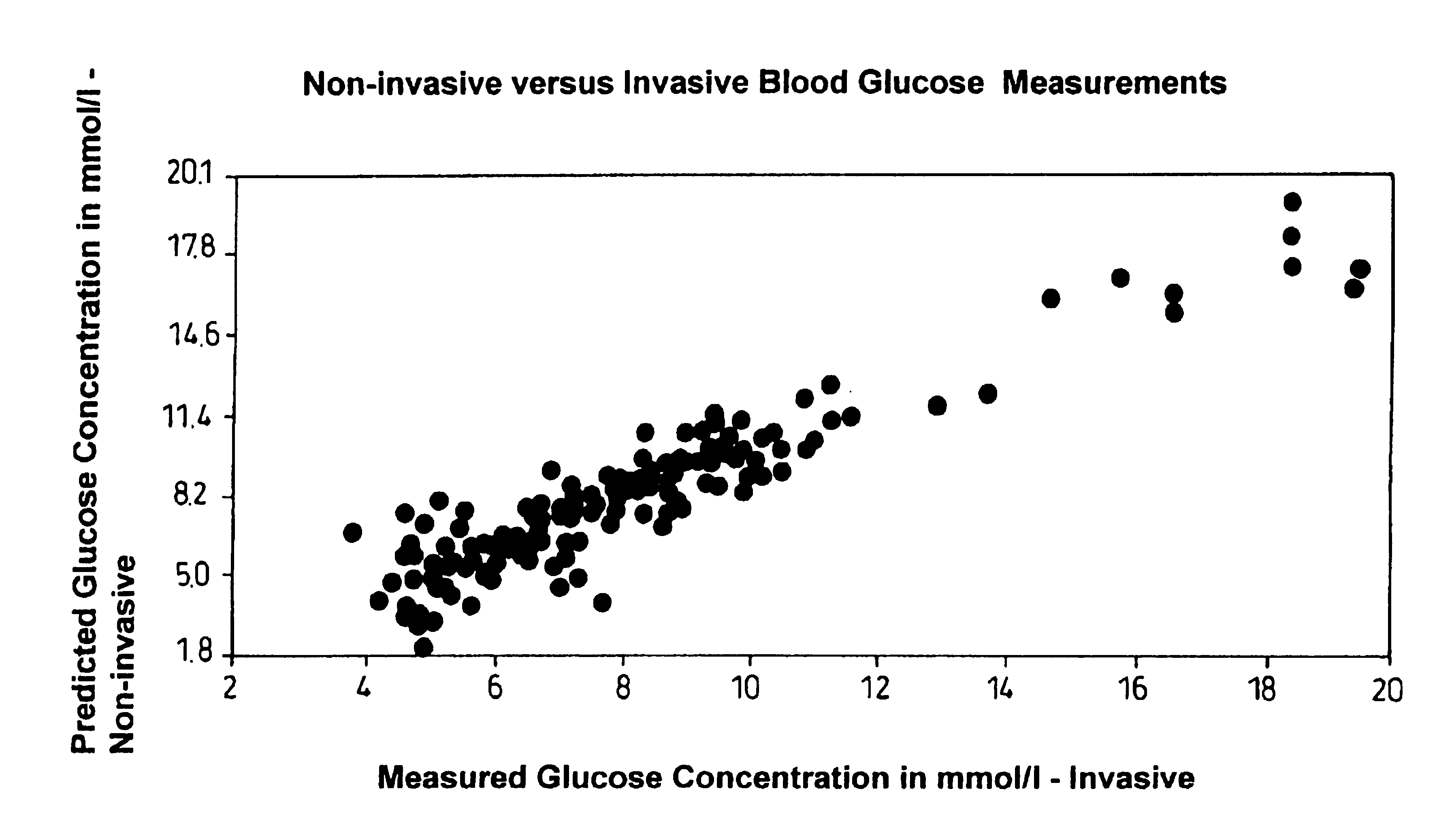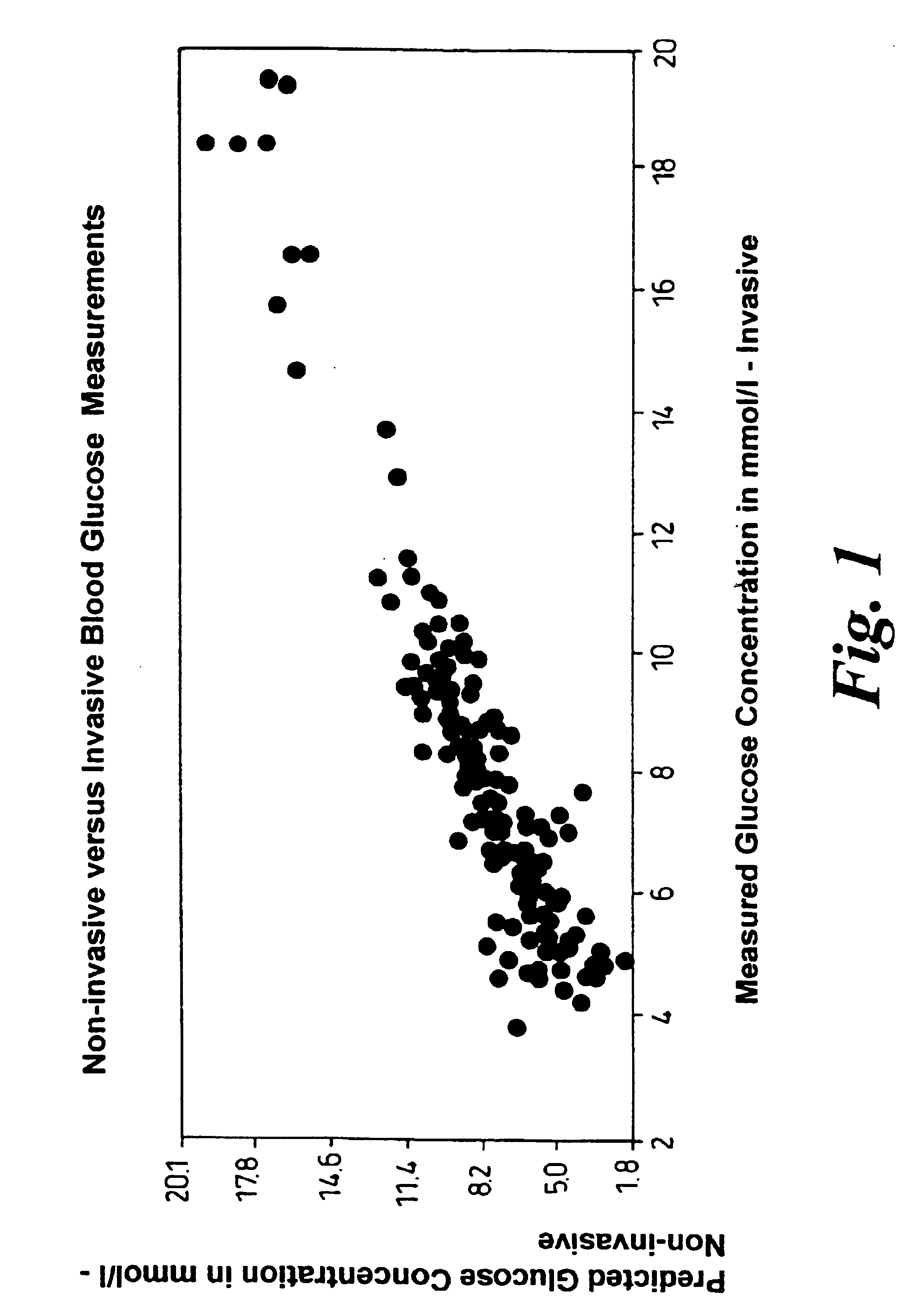Apparatus for measurement of blood analytes
a technology for measuring apparatus and blood analytes, applied in the field of new monitors, can solve problems such as coma, postural hypertension (low blood pressure), and impaired cognition and consciousness, and achieve the effects of improving sensation and leg ulcers, improving diagnostic accuracy, and improving accuracy
- Summary
- Abstract
- Description
- Claims
- Application Information
AI Technical Summary
Benefits of technology
Problems solved by technology
Method used
Image
Examples
example 1
[0039]In vivo measurements using the MCPD spectrophotometer were carried out at 10 min intervals on the fingertips of 8 volunteers during the course of glucose tolerance tests and the results compared with those measured using a conventional blood glucose monitor. In addition, parallel measurements of local blood flow (laser Doppler flux) and temperature were made.
[0040]The analysis which is presented here uses the same wavelength range used in the previous glucose studies carried out namely: 805 nm, 925 nm, 970 nm and the broadband average 1000-1100 nm, but additionally wavelengths sampled at regular intervals in the entire range 800 nm to 1100 nm. Intervals of 1.96 nm worked well.
[0041]Earlier work demonstrated that the glucose-dependent signal emanates from haemoglobin. Furthermore, although the 805 nm wavelength could be used to compensate for small changes in haemoglobin concentration large changes continued to interfere with the sensitivity for glucose. It w...
PUM
 Login to View More
Login to View More Abstract
Description
Claims
Application Information
 Login to View More
Login to View More - R&D
- Intellectual Property
- Life Sciences
- Materials
- Tech Scout
- Unparalleled Data Quality
- Higher Quality Content
- 60% Fewer Hallucinations
Browse by: Latest US Patents, China's latest patents, Technical Efficacy Thesaurus, Application Domain, Technology Topic, Popular Technical Reports.
© 2025 PatSnap. All rights reserved.Legal|Privacy policy|Modern Slavery Act Transparency Statement|Sitemap|About US| Contact US: help@patsnap.com



